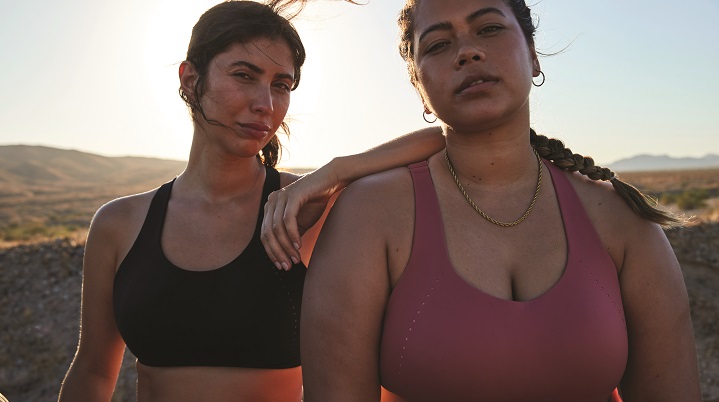When global sportswear retailer Lululemon launched the AirSupport Bra last month, it described the product as “revolutionary” and “groundbreaking”. Unlike most bras that rely heavily on straps or the underband to keep breasts from bouncing during high-impact exercise like running, the AirSupport Bra uses injected-foam technology to lift and shape the breasts, spreading the load across the entire bra to reduce pressure on the wearer’s neck and shoulders. “We’ve innovated what high s
high support feels like in a running bra,” Katherine Warrington Williams, Lululemon’s vice president of women’s design, told Inside Retail.
The AirSupport Bra is the result of over five years of research into breast movement at Whitespace, Lululemon’s innovation lab in Vancouver, Canada, and two years of testing with its global collective of runners.
There’s just one thing missing: sizing that would fit the majority of women in the US, UK and Australia who wear above a size 14. Available in 32-40 C-DDD, the AirSupport bra is simply too small for many people who would like to buy it.
A lack of options
It’s a familiar situation to Holly Richards, a former journalist who recently started a plus-size sportswear brand, Club Melon, out of frustration with the lack of bigger sports bras on the market.
“As depressing as it sounds, I literally couldn’t find a sports bra in my size. It does not exist,” Richards told Inside Retail.
Most major bra retailers, such as Berlei, don’t sell anything in her current size, a 28E. And despite paying “exorbitant” international shipping fees to try products from specialty brands in the US that claim to offer her size, none of them have actually worked.
After reaching out to her plus-size communities online, Richards realised she wasn’t the only one struggling with this issue.
“The most talked-about topics on these forums are activewear and sports bras,” she said.
According to a survey of over 600 plus-sized women in Australia that Richards conducted, 97 per cent said their fitness is important to them, but 88 per cent said they can never, or only sometimes, find a sports bra in their size.
Nearly half, 48 per cent, said that feeling comfortable during exercise was stopping them from exercising more.
“That whole fat-phobic notion that if you’re overweight, then you don’t care about health or fitness, that’s just not true,” she said.
“All these women are saying they would like to increase their exercise, but don’t feel they can because of confidence issues and support issues linked to clothing.”
Richards believes the false assumption that fat people don’t exercise is the main reason plus-size sports bras are so hard to find, and it’s time for this to change.
“If we’re not equipping people in different-sized bodies to partake in different types of activities, then that is perpetuating a weight-biased society,” she said.
She’s also puzzled by the decision of a brand like Lululemon to launch the AirSupport Bra with so few sizes, given the data shows there’s a big market for extended sizing.
“It would make sense financially to offer a bra in larger sizes, so the logic doesn’t really stick with me there,” she said.
Lululemon has told Inside Retail it plans to offer its AirSupport bra in more sizes in future.
What it takes to make a plus-size sports bra
While Richards remains vocal about the need for brands to make sports bras in bigger sizes, after spending the past year trying to design her own plus-size sports bra, she has a better understanding of why so few do.
“It is a really gruelling process. I can see why people get deterred in the early stages,” she said.
“It is very difficult to create a bra for a bigger-boobed, larger-backed person because the actual patterns don’t exist, so you have to create them from scratch.
“It’s not that the size of the body is the problem, it’s just that it’s not seen as the norm, so you can’t take the shortcuts you could take if you were creating something in a size 10.”
Richards is on her fourth prototype and hopes to launch her product by the middle of next year. While she is keeping many of the details close to the chest, so to speak, she plans to offer sizes 16-32, the equivalent of a 7XL. The design will be adjustable to suit different cup sizes.
“That’s well beyond any of the current competitors,” she said.
However, finding manufacturing partners who are open to working with a plus-size brand has proved to be unexpectedly difficult.
“The minimum order quantity is obviously one aspect of it, but the other aspect is just flat-out fat phobia and not wanting to touch plus sizes,” she said.
She’s hopeful that as more mainstream brands expand their plus-size offerings, this will start to change.
“I’m not even close to giving up,” she said.





